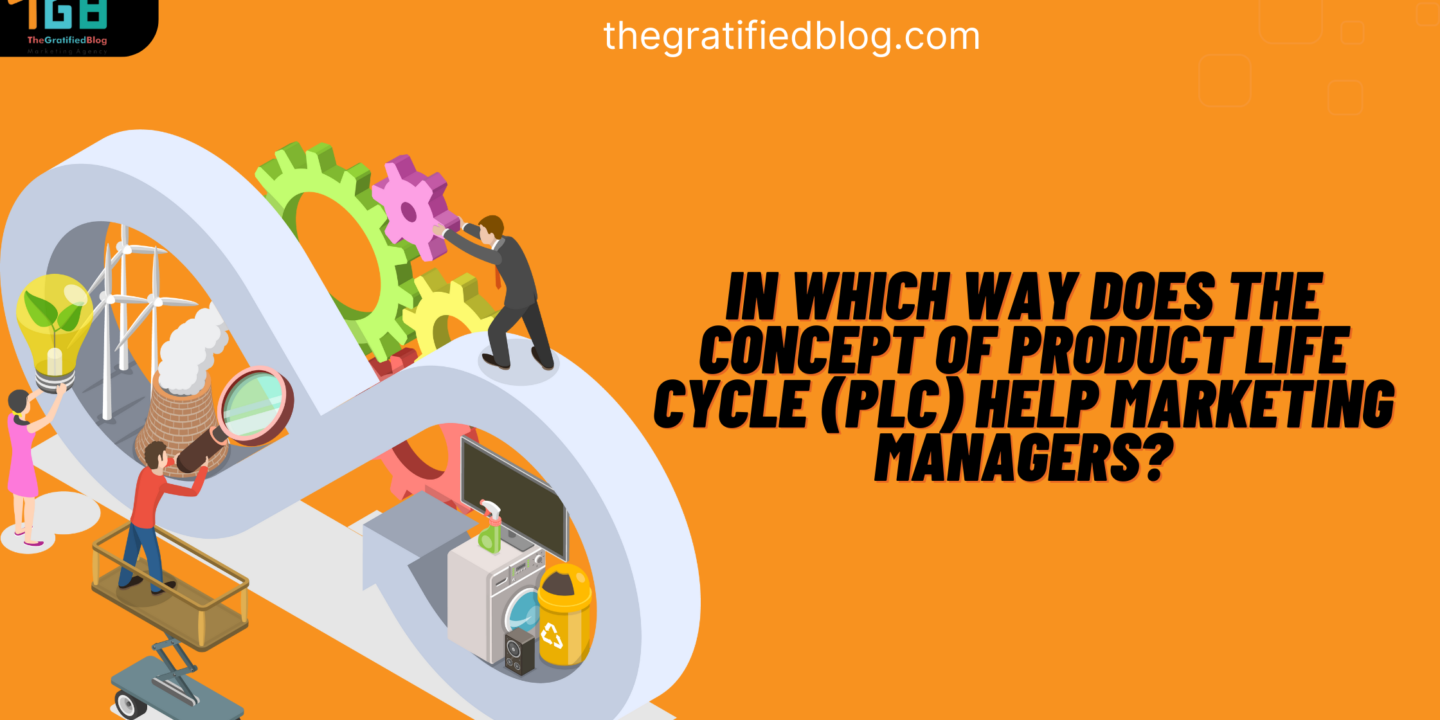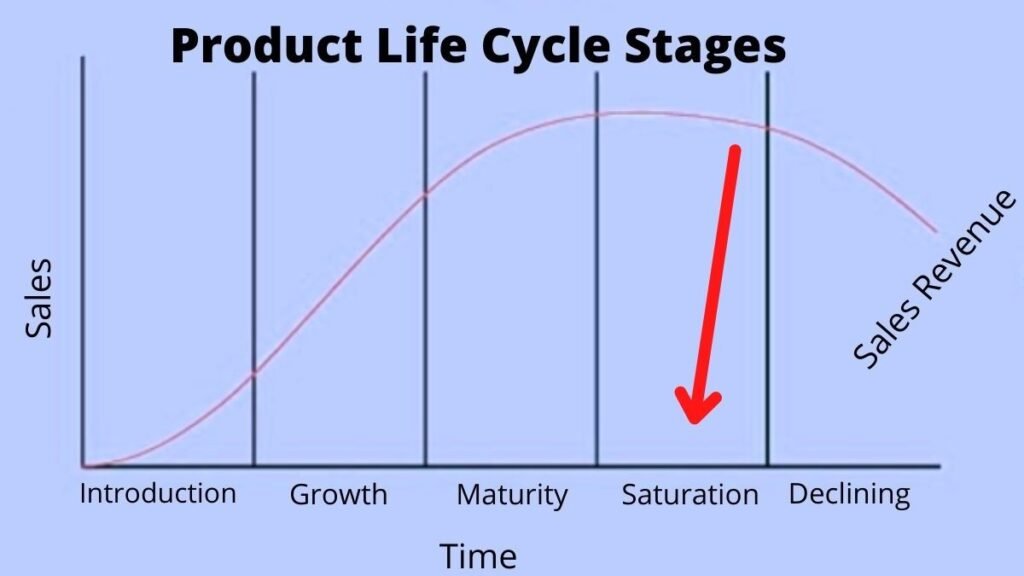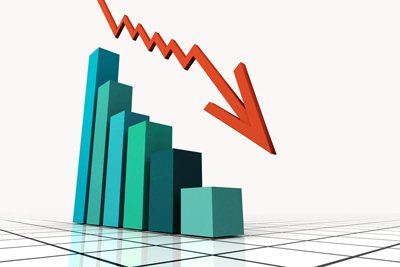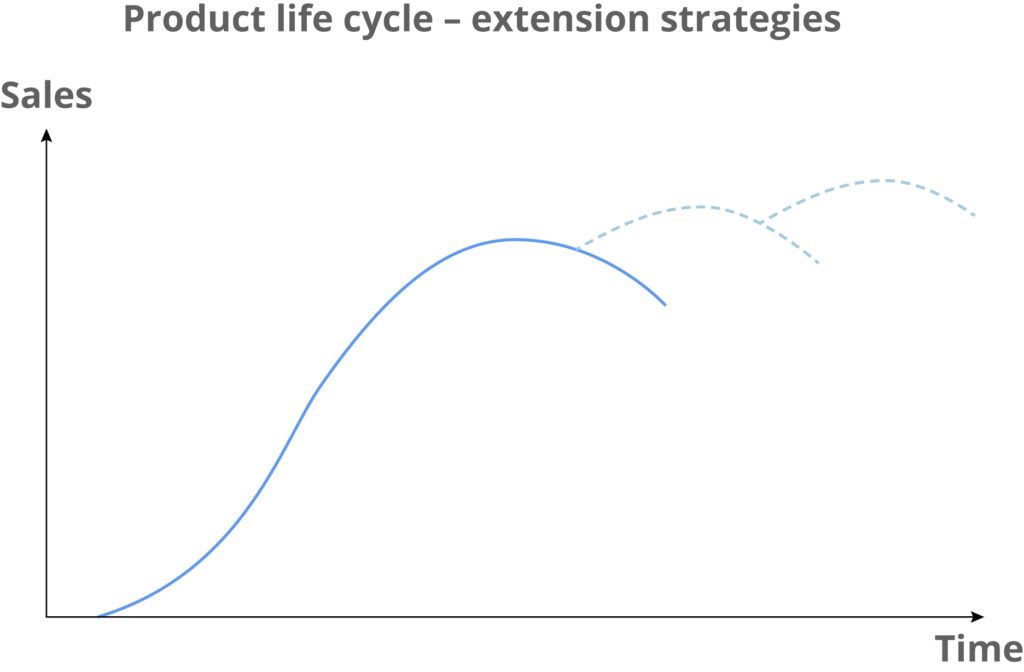
Being ahead of the curve is crucial for attaining success in the ever-evolving business and marketing landscape. It requires a thorough understanding of your product’s journey from inception to obsolescence, often described through the Product Life Cycle (PLC) lens.
In which way does the concept of Product Life Cycle (PLC) help marketing managers? This concept is pivotal in marketing managers’ strategies and decision-making processes, guiding them in making informed choices to ensure their product’s success.
This article will delve into the product life cycle, its importance, and how it naturally integrates with marketing managers’ efforts to pursue success.
What Is The Product Life Cycle (PLC)?
The Product Life Cycle (PLC) is a theory outlining the typical phases a product undergoes, starting with its introduction and concluding with its eventual decline in the market.
It consists of four key phases: Introduction, where a new product is launched and gains initial attention; Growth, where it experiences rapid sales and market expansion; Maturity, characterized by stable sales and competition; and Decline, where sales decrease as the product becomes obsolete or faces new competition.
During the Introduction phase, companies build awareness and market acceptance as part of their stage marketing strategy. In the Growth phase, efforts are directed towards scaling production and expanding the customer base.
Maturity sees the need for differentiation and market share, while strategies may involve discontinuation or rebranding in the Decline phase. Understanding the PLC helps businesses Make decisions based on information, allocate resources efficiently, and strategize for the future of their products.
Why Is The Product Life Cycle Important?
The concept of the Product Life Cycle holds significant importance in marketing and business strategy. Primarily, it offers a structure for comprehending how products evolve, helping companies make informed decisions at each stage.
It assists in identifying when to launch, modify, or discontinue a product, ultimately impacting profitability and resource allocation.
The Product Life Cycle aids market segmentation, as different stages require distinct marketing approaches and customer targeting. It also fosters innovation, as companies are encouraged to improve or develop new products to stay competitive continually.
It offers insights into demand forecasting and inventory management, optimizing resource allocation, and preventing overproduction or shortages.
The Product Life Cycle also enhances strategic planning by encouraging long-term thinking, and it is a valuable tool for assessing a product’s maturity and determining whether to extend its life through modifications or rebranding.
Grasping and overseeing the Product Life Cycle is essential for sustainable business growth and success.
How Does The Product Life Cycle Work?
The product life cycle (PLC) is a theory delineating the different phases a product undergoes, starting from its introduction to the market and concluding with its eventual decline and discontinuation.
Understanding the PLC is crucial for Assisting businesses in making well-informed decisions regarding their products and marketing strategies. The typical product life cycle consists of four stages:
Introduction:
- This is the stage when a new product is introduced to the market. Sales are usually slow initially, as consumers are unaware of the product’s existence.
- Companies invest substantial resources in research and development, marketing, and promotional activities to raise awareness and generate initial sales.
- Profits are typically low or even negative due to the high initial costs.
Growth:
- The product gains market acceptance in the growth stage, and sales increase rapidly.
- Word-of-mouth, positive reviews, and effective marketing campaigns contribute to this growth.
- Companies may expand their product lines or enter new markets during this phase to capitalize on success.
- Profits increase as sales grow and economies of scale are realized.
Maturity:
- A slowdown in the sales growth rate characterizes the maturity stage. The product has reached its peak market penetration.
- Competition increases as more companies enter the market, leading to price wars and narrower profit margins.
- Companies may focus on product differentiation, cost reduction, and marketing efforts to maintain their market share.
- Profits tend to level off or decline, but the product can continue to generate significant revenue.
Decline:
- In the decline stage, sales and profits start to decline. This can happen for various reasons, such as changing consumer preferences, technological advancements, or market saturation.
- Companies may discontinue the product or offer it to a niche market that still values it.
- The company may redirect resources to other products or innovations if the product is discontinued.
It’s important to note that not all products follow the same PLC pattern, and The length of each stage can vary considerably depending on the product and industry.
Some products may experience a shorter life cycle, while others may enjoy prolonged growth and maturity phases. Companies must continuously monitor their products’ life cycles and adjust their approaches to optimize profitability and secure sustained success.
In Which Way Does The Concept Of Product Life Cycle (PLC) Help Marketing Managers?
The Product Life Cycle (PLC) concept is a valuable tool for marketing managers as it provides a framework for understanding the various stages a product goes through in the market.
This understanding can help marketing managers make informed decisions and develop effective strategies. Here’s how the PLC concept assists marketing managers:
Strategic Planning: PLC helps in long-term strategic planning. Marketing managers can anticipate a product’s stages, allowing them to plan for each phase accordingly.
For example, they can allocate resources and set appropriate goals for each stage, including introduction, growth, maturity, and decline.
This strategic insight enables them to make informed decisions on product modifications, pricing strategies, and marketing tactics at different stages, ultimately optimizing the product’s profitability and lifespan.
It also aids in aligning marketing efforts with the product’s lifecycle, ensuring efficient resource allocation and maximizing market penetration and competitive advantage.
Product Development: In the introduction stage, marketing managers can leverage PLC to prioritize research and development efforts, ensuring the creation of innovative products to attain a competitive advantage and seize a substantial market share.
By understanding the PLC, managers can make informed decisions regarding pricing and distribution strategies, optimizing them for the initial product launch.
PLC assists in gauging market acceptance and adjusting marketing strategies as the product progresses through subsequent stages, ultimately leading to improved decision-making and sustainable product success.
Pricing Strategies: The PLC concept guides pricing decisions. In the growth stage, marketing managers can employ competitive pricing strategies to capture market share, taking advantage of increasing demand and competition.
During the maturity stage, pricing adjustments may be made to ensure profitability and sustain market presence as competition intensifies. In the decline stage, PLC helps determine pricing strategies to clear out inventory efficiently, ensuring the product stays within the company’s overall profitability.
This strategic insight into pricing is crucial for optimizing revenue and market positioning throughout a product’s lifecycle.
Promotion And Advertising: Understanding the Product Life Cycle (PLC) is invaluable for marketing managers as it guides their promotion and advertising efforts. In the introduction stage, they can utilize informative advertising to educate consumers about the new product’s features and benefits, fostering initial awareness.
In the growth stage, the PLC aids in crafting persuasive advertising that highlights the product’s unique selling points, setting it apart in a competitive market.
As the product matures, marketing managers can shift towards reminders or reinforcement advertising to maintain consumer interest and loyalty. This strategic alignment with the PLC optimizes marketing resources and enhances overall campaign effectiveness.
Distribution Channels: The concept of Product Life Cycle (PLC) provides valuable guidance to marketing managers in optimizing distribution channels. During the introduction stage, they may opt for selective distribution to create awareness and control initial costs.
As the product transitions into the growth stage, it can strategically expand distribution to reach a broader audience and capture market share. In the maturity stage, adjusting distribution to target specific market segments or regions becomes essential to maintain product relevance.
PLC empowers marketing managers to adapt distribution strategies as the product evolves through its life cycle, ensuring efficient market penetration.
Product Differentiation: The PLC concept can help marketing managers by guiding them on when product differentiation is critical. In the growth stage, they focus on adding features and benefits to stand out in a growing market, capitalizing on consumers’ interest in new features.
During the maturity stage, when competition intensifies, they may shift their strategy to rely on branding and quality to differentiate the product.
By understanding where their product falls in the PLC, managers can make informed decisions on effectively positioning and marketing their offerings, ensuring continued relevance and competitiveness in the market.
This strategic insight enables them to adapt their marketing tactics in alignment with the product’s life cycle stage.
Resource Allocation: Understanding where a product is in its life cycle helps marketing managers allocate resources effectively. For instance, in the growth stage, more resources can be allocated to marketing and production, while in the maturity stage, efforts may shift towards cost reduction and optimizing processes.
This strategic resource allocation allows companies to maximize their profits, maintain competitiveness, and make informed decisions on where to invest or cut back, ultimately enhancing overall marketing efficiency and profitability.
It enables marketing managers to adapt to changing market dynamics and consumer preferences as the product progresses through its life cycle, ensuring a more agile and adaptive marketing strategy.
Forecasting And Inventory Management: Marketing managers can use the PLC concept to forecast demand and manage inventory effectively. By recognizing the product life cycle stages, they can tailor their inventory levels to match anticipated demand.
In the decline stage, they can make informed decisions about discontinuing the product or strategically clearing existing inventory, reducing holding costs and minimizing losses.
Adopting this proactive approach reduces the likelihood of having excessive or inadequate stock, optimizing resource allocation and maximizing profitability throughout the product’s life cycle.
Competitor Analysis: PLC analysis allows marketing managers to assess the life cycle stage of competitors’ products. This information helps in adapting strategies to gain a competitive edge.
By understanding where competitors’ products are in their life cycles, marketing managers can tailor their pricing, promotion, and distribution strategies accordingly.
They can identify opportunities to differentiate their offerings, such as introducing new features, focusing on product quality in the growth or maturity stages, or capitalizing on price reductions and cost-cutting in the decline stage. This competitive insight empowers marketing managers to make informed decisions and stay ahead.
Risk Management: By recognizing the potential risks associated with each stage of the product life cycle, marketing managers can prepare contingency plans and make more informed decisions to mitigate these risks.
Embracing this proactive approach allows them to allocate resources efficiently, adjust pricing and promotional strategies, and adapt their marketing strategies according to market dynamics.
Understanding the PLC helps identify when a product might face declining sales or increased competition, allowing managers to plan for product updates, extensions, or discontinuation.
Product Life Cycle Marketing Strategies
The Product Life Cycle (PLC) concept involves marketing that describes the various phases a product undergoes, from its market introduction to its eventual decline.
Marketers employ different product life cycle marketing strategies for each stage to manage a product’s life cycle effectively. Here are a few strategies:
Introduction Stage

- Product Launch: At this stage, focus on creating awareness and generating excitement about the product. Use promotional activities, such as advertising and public relations, to introduce the product to the target market.
- Pricing Strategies: Introductory prices can be high to recover development costs or low to penetrate the market quickly.
- Distribution: Initially, limited distribution may be used to control supply and create demand.
Growth Stage

- Build Market Share: Concentrate on expanding market share by reaching new customer segments and attracting competitors’ customers.
- Product Improvement: Enhance the product’s features and quality to maintain a competitive edge.
- Marketing Expansion: Increase advertising and promotional efforts to sustain growth.
- Competitive Pricing: Adjust pricing strategies to maintain a competitive advantage.
Maturity Stage

- Diversification: Explore new markets, product variations, or distribution channels to prolong the product’s life.
- Cost Reduction: Streamline production and distribution processes to reduce costs and maintain profitability.
- Promotions: Shift marketing efforts from customer acquisition to customer retention through loyalty programs or customer relationship management (CRM).
- Pricing Strategies: Implement price cuts, bundles, or discounts to maintain market share.
Saturation Stage

- Market Segmentation: Target specific niche segments within the mature market to find untapped opportunities.
- Product Differentiation: Modify the product or create unique value propositions to stand out from competitors.
- Price Adjustments: Keep prices competitive while considering value-added features and benefits.
- Cost Control: Continuously control costs to maintain profitability in a competitive environment.
Decline Stage

- Product Rationalization: Evaluate the product portfolio and discontinue unprofitable or outdated products.
- Harvesting: Maintain the product with minimal marketing efforts while reducing costs.
- Exit Strategies: Consider discontinuing the product or selling it to another company.
- Focus on Core Products: Redirect resources to newer products with higher growth potential.
Extension Strategies

- Line Extension: Introduce new variations or versions of the product to rekindle interest and extend its life.
- Geographic Expansion: Launch the product in new markets or regions where it has yet to be introduced.
- Licensing and Franchising: Allow other businesses to use your product or brand in different markets or applications.
- Rebranding: Give the product a fresh image or position it differently to attract a new audience.
These strategies help marketers adapt to the changing dynamics of a product’s life cycle and maximize its potential at each stage. The specific strategies depend on product, market conditions, and competition.
Conclusion
The Product Life Cycle (PLC) concept is a fundamental tool for marketing managers. It provides a roadmap to navigate a product’s journey in the market, allowing for strategic planning, resource allocation, and informed decision-making.
By understanding which stage a product is in, marketing managers can develop tailored strategies, optimize pricing and promotions, and remain competitive in the ever-changing business landscape.
In essence, the PLC concept is a compass that guides marketing managers on the path to sustained success in marketing and business.








No Comments